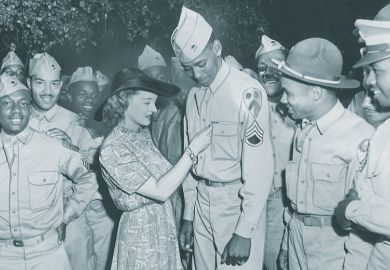Alastair Phillips has produced a meticulously researched work covering a fascinating aspect of French cinema, or, more accurately, cinema in France.
The émigrés referred to in the book's title include Anatole Litvak, Robert Siodmak, Billy Wilder and Fritz Lang, all of whom were in transition to eventual success in Hollywood.
I am ignorant of the films they made in Paris, and it is now almost impossible to see them, although Wilder's Mauvaise Graine and Lang's Liliom are available on DVD. I confess this because cinema is a medium we assume can be studied directly, and Phillips makes every effort to situate the reader inside the unseen film, often describing important sequences in detail but, in the end, films are made to be seen rather than read.
This is frustrating because we are familiar with much of the glorious cinema of the 1930s made by French directors, and a direct comparison would have been valuable. Examples from the scripts, which were often not written by the directors, might, in the absence of the films, have confirmed the particular outsiders' different interpretation of the French milieu.
Wilder's Mauvaise Graine is the only film referred to that I have been able to see. Much of this film is primitive in its technique and unremarkable in its direction. Wilder is most comfortable away from the urban setting, showing suggestions of his panache with comic sequences that he later developed in Hollywood with the writer I.A.L. Diamond. His mise en scène is most relaxed once the leading couple are on the road, eventually abandoning montage, first for a wonderfully sustained walking dialogue scene and then for a beautiful continuous travelling shot as they approach Marseilles, but this is hardly useful evidence for the subject of Phillips' book.
The author is good at delineating the social and economic context of Paris in the 1930s, including the kind of physical environment that had been created in contrast, for instance, to Berlin, and he presents interesting sidelights on French attitudes to these particular foreigners.
As for the émigré responses to the French, Litvak said of Paris: "Perhaps there is something in the air, in the way the spontaneous spirit of all the collaborators suits my temperament. The French do the work in an instant that the English, who are nonetheless charming, take two hours to do with solemn slowness; or the Germans can only carry out with the most precise orders."
As Phillips reminds us, when sound arrived, the first response in continental Europe was to make multi-language versions in parallel - same script, sets and crew but different casts for each language. This lasted only three years, yet the influence of film-makers on cinema beyond their national context has continued, and Phillips has made a valuable contribution to our understanding of this phenomenon. But I wish publishers were more willing to include DVDs with books. Otherwise, where relevant films are unavailable, the most interesting work on cinema history might seem too much like an academic exercise.
Roger Crittenden is director of the full-time programme, National Film and Television School.
City of Darkness, City of Light: Emigre Filmmakers in Paris 1929-1939
Author - Alastair Phillips
Publisher - Amsterdam University Press
Pages - 254
Price - £32.00 and £19.00
ISBN - 90 5356 633 3 and 634 1
Register to continue
Why register?
- Registration is free and only takes a moment
- Once registered, you can read 3 articles a month
- Sign up for our newsletter
Subscribe
Or subscribe for unlimited access to:
- Unlimited access to news, views, insights & reviews
- Digital editions
- Digital access to THE’s university and college rankings analysis
Already registered or a current subscriber? Login



